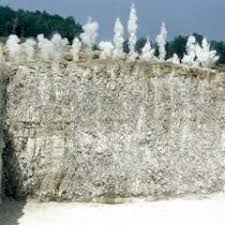 Blasting releases a tremendous amount of energy for fragmenting and displacing rocks within a very short time. The blast should be designed so that the energy released by detonation performs useful work. Any imbalance between the distribution of the explosive energy, geomechanical strength of the surrounding rock mass, and confinement creates a potential hazardous condition by channeling the energy through the path of least resistance. Such imbalance can propel flyrock beyond the blast area and create a potential for serious injuries and fatalities. Case studies listed in Appendix A underscore this issue. Blasters should follow procedures required by local, state and federal statutes to guard against catastrophic consequences. The principal factors attributed to the fatalities were personal, task and environmental. Intervention programs in the realm of behavioral/educational, administrative/regulatory, and engineering merit serious attention. During the ten-year period from 1989 to 1998 a reduction in fatal and nonfatal blasting injuries in surface coal mines was observed compared to the previous ten-year period (1979-1988). However, in the surface metal/nonmetal mining sector such reduction was not observed.
Blasting releases a tremendous amount of energy for fragmenting and displacing rocks within a very short time. The blast should be designed so that the energy released by detonation performs useful work. Any imbalance between the distribution of the explosive energy, geomechanical strength of the surrounding rock mass, and confinement creates a potential hazardous condition by channeling the energy through the path of least resistance. Such imbalance can propel flyrock beyond the blast area and create a potential for serious injuries and fatalities. Case studies listed in Appendix A underscore this issue. Blasters should follow procedures required by local, state and federal statutes to guard against catastrophic consequences. The principal factors attributed to the fatalities were personal, task and environmental. Intervention programs in the realm of behavioral/educational, administrative/regulatory, and engineering merit serious attention. During the ten-year period from 1989 to 1998 a reduction in fatal and nonfatal blasting injuries in surface coal mines was observed compared to the previous ten-year period (1979-1988). However, in the surface metal/nonmetal mining sector such reduction was not observed.
References :
NIOSH (2000). Worker health chartbook, 2000: U.S. Department of Health and Human
Services, Public Health Services, Centers for Disease Control and Prevention, National Institute for Occupational Safety and Health, DHHS (NIOSH) Publication No. 2000-127


0 komentar:
Post a Comment